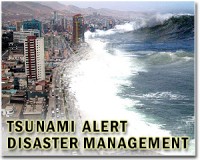| . |  |
. |
Rifu, Japan (AFP) March 21, 2011 An unbearable sense of conflict shadows visitors to a stadium-turned-morgue in the northeastern Japanese city of Rifu, where hundreds of white-draped coffins lie waiting for identification. There's the natural wish that they won't find the remains of the missing family member they seek and can continue clinging to the belief that he or she may have survived Japan's deadliest natural disaster for nearly a century. And then there's the hope that they will find the remains; that they will be one of the few who can draw some comfort from being able to recover a body and to cremate or bury it with the proper rituals and respect. Because for all the chaos and confusion sowed by the quake-tsunami disaster of March 11, one thing is increasingly clear: the real morgue is actually a permanent graveyard spread across hundreds of miles of devastated coastline. The official death toll currently stands at 8,450, but more than 12,000 others are listed as missing. Yukiko Sakai, 33, came to the morgue in Rifu to look for her husband of only three months, Kenji, who went missing after the tsunami destroyed their seaside apartment. Although more than a week has passed without a word, Sakai insists she has not given up hope. "I came here to eliminate the worst-case possibility. If he is not here, he could be alive," she said. "I am sending him mobile text messages everyday so that, once he is able to see them, he will be able to find us quickly," she added. The couple were at home when the initial quake happened but took two different cars to escape. After a while, Yukiko stopped to phone her husband to say she was going to her parents' house. The next time she called there was no reply. She believes he went back to pick up some things from the apartment and was there when the tsunami flattened the whole neighbourhood. It is understandably hard for people like Sakai to accept, but despite the miraculous rescue of two people from the rubble of one town on Sunday, the main search effort switched its focus from survivors to bodies days ago. And experts say the vast majority of those remains will never be recovered given the destructive force of the tsunami that wiped out entire communities. In the small coastal town of Minamisanriku, about 55 kilometres (30 miles) northwest of Rifu, 8,000 residents have been listed as missing, yet not a single body has been found after a week of searching. Takumi Fukukawa, 35, has made several visits to the Rifu facility in his search for his 60-year-old mother Sachiko. "We have been looking for her at evacuation centres and checking official Internet lists on people taking shelter," he said. "We came here on Friday, but we couldn't find her. We came again just to see if there is any new information." Such information is generally scarce, confused or completely absent, reflecting the huge challenges the authorities face in identifying the bodies that have been recovered. "It's been very difficult," said Makio Akao, an official of Miyagi prefecture, where Rifu is located. "The usual means are not always available -- personal belongings were washed away, clothes were ripped off, fingers were so swollen that prints could not be taken," Akao told AFP. Dental records would normally be another option, but local dental clinics were destroyed in the tsunami along with everything else. Whatever identifying details that can be obtained are published on lists on the Internet, television and community bulletin boards for families to review. If nobody comes forward, Akao said there may be little choice but to bury the remains anonymously while preserving DNA samples to use in the event of any future claims. The Japanese usually cremate remains. But local governments say a lack of fuel -- which is desperately needed by homeless survivors for heat and transport -- make burial a more sensible option. The official death toll in Miyagi alone stands at 4,882, but police chief Naoto Takeuchi said Sunday that the prefecture would need to secure facilities "to keep the bodies of more than 15,000 people".
Share This Article With Planet Earth
Related Links Bringing Order To A World Of Disasters When the Earth Quakes A world of storm and tempest
 Trauma stalks children of Japan tsunami
Trauma stalks children of Japan tsunamiKesennuma, Japan (AFP) March 20, 2011 The horror of Japan's tsunami has raised concerns over the long-term impact on children, some of whom are already displaying signs of trauma, from screaming nightmares to silent withdrawal. According to the charity Save the Children, around 100,000 children were displaced by what has become Japan's worst natural disaster since 1923, with nearly 20,000 people dead or missing. The potentia ... read more |
|
| The content herein, unless otherwise known to be public domain, are Copyright 1995-2010 - SpaceDaily. AFP and UPI Wire Stories are copyright Agence France-Presse and United Press International. ESA Portal Reports are copyright European Space Agency. All NASA sourced material is public domain. Additional copyrights may apply in whole or part to other bona fide parties. Advertising does not imply endorsement,agreement or approval of any opinions, statements or information provided by SpaceDaily on any Web page published or hosted by SpaceDaily. Privacy Statement |